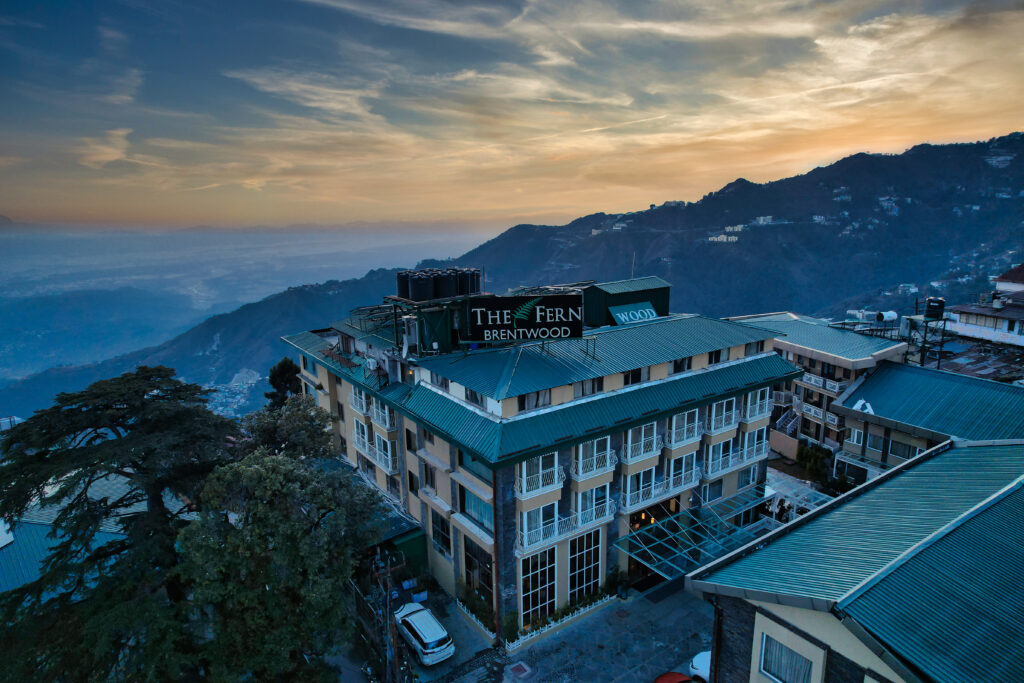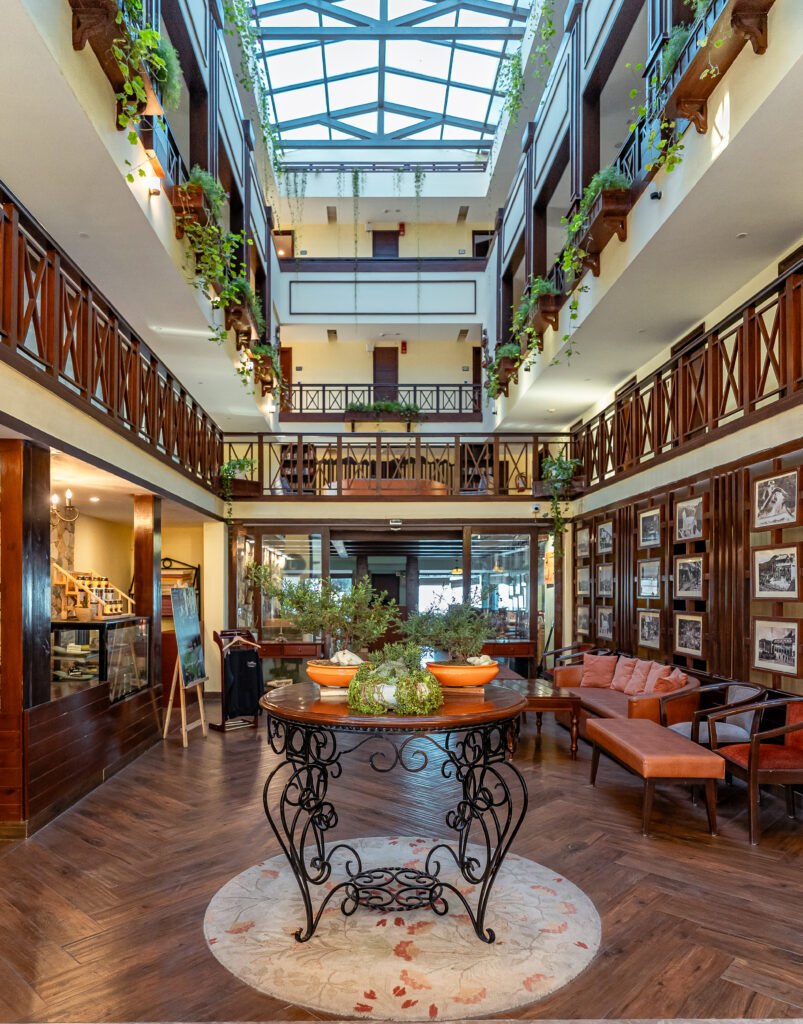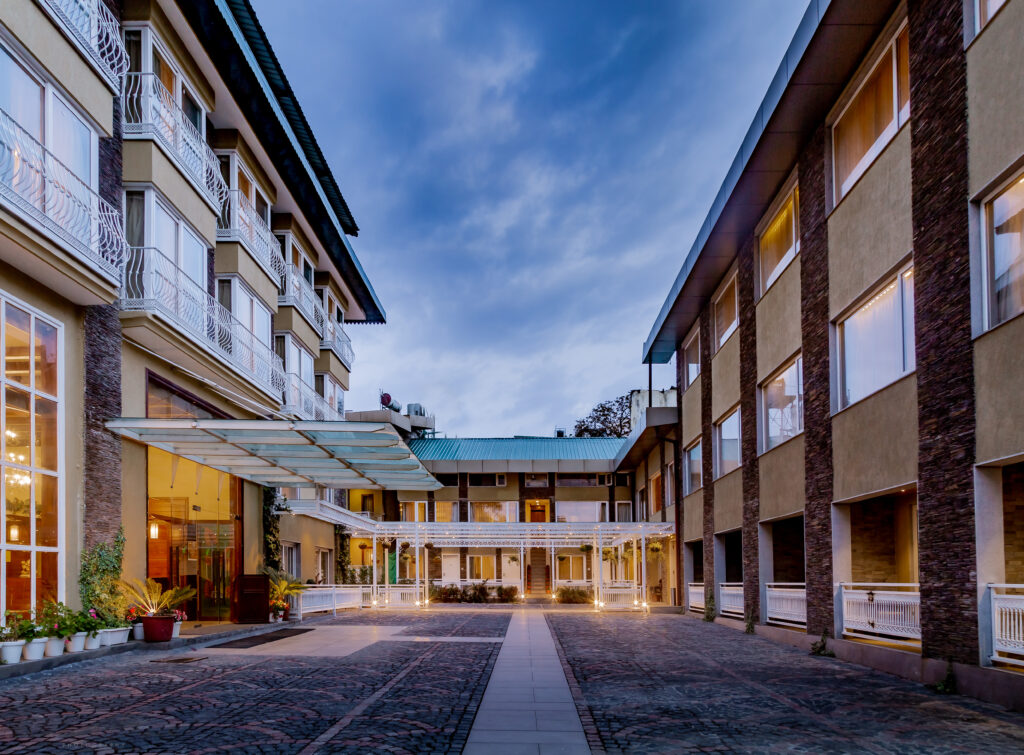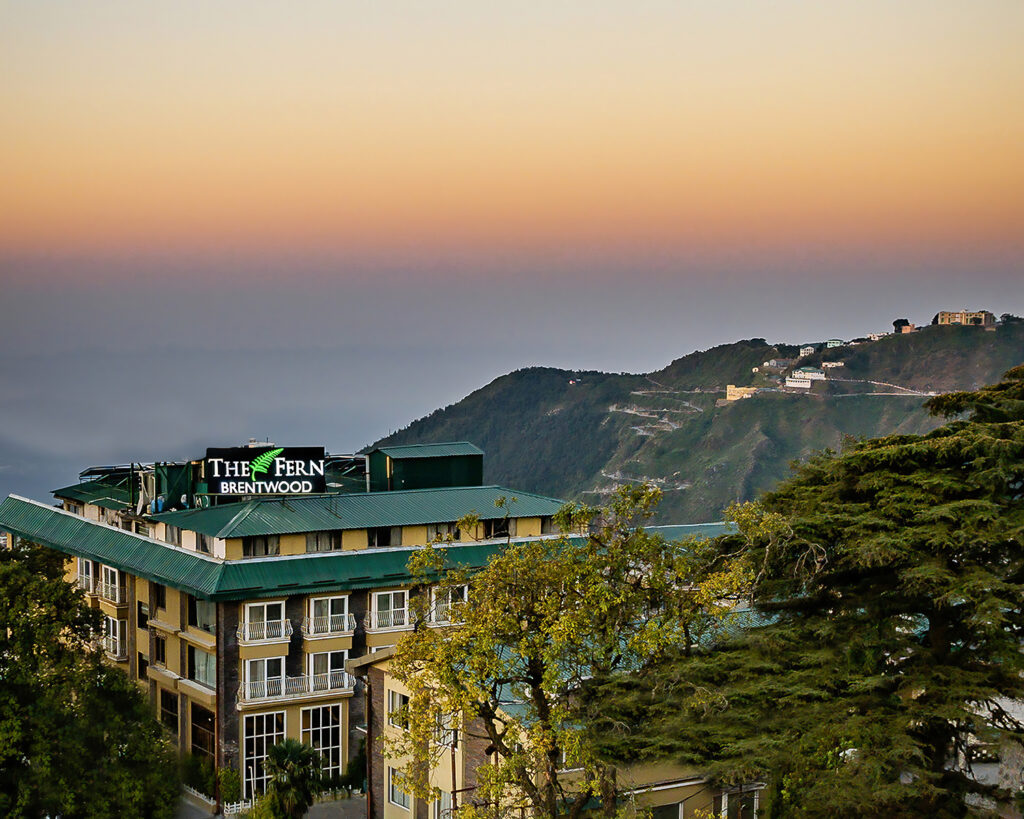
“Breakfast in the ancient forest” with ‘The Fern Brentwood Resort, Mussoorie’

Discerningly conscious about sustainability, The Fern Brentwood Resort, Mussoorie ensures that it follows responsible hospitality. Apart from using paper straws and natural unbleached napkins made from 100% Agro Fiber Source, they also provide Alkaline water as an in-room amenity for all guests sealed in glass bottles.
TDM interviews Arindam C Bahel, General Manager, The Fern Brentwood Resort, Mussoorie, to find out more about the resort its menu offerings, the destination and business growth.
Travel Daily Media (TDM): Running a hotel in the hills is a joy but can be challenging as well. Kindly share with us the USP of The Fern Brentwood Resort, Mussoorie.
Arindam C Bahel (ACB): The Fern Brentwood Resort, Mussoorie follows the ethos of Environmental sensitivity and provides discerning guests “Hospitality with responsibility.” We are one of the few hotels in the hills that apart from providing our guests with impeccable service and food deliver hospitality keeping in mind the environment. We are the first hotel in Mussoorie to introduce Alkaline water as an in-room amenity for all guests -, we serve guests with PH7.8 water fully sanitized, packed and sealed in glass bottles as an environmental initiative saving 60000 plastic bottles each year. The guests are provided with 2 bottles of water and refills as required.
We offer a unique “Breakfast in the Ancient Forest” – a guided morning walk and Breakfast tour an interactive segment where the General Manager is your host. The walk is a 2-hour activity for the guests who wish to explore Mussoorie – the flora and historical sites. One can see the Uttarkashi and the Garhwal Chamoli snow-capped ranges from here. We serve a full-course breakfast to Guests while telling them stories about local folklore from the hills.
We replaced hazardous plastic and paper straws and have started using FSSAI-approved, eco-friendly, safe & sustainable rice straws as an alternative. Thus, drastically reducing single-use plastic and virgin paper consumption. We use natural unbleached napkins made from 100% Agro Fiber Source – sugarcane waste, eliminating paper towels from our F&B areas completely. We use Solar water heaters that help in conserving electricity and providing alternate energy to heat water for room usage. This way we save approximately 80 to 100 units per day. We also have Rainwater harvesting tanks with a capacity of 10 KL in the hotel for water conservation.
Sustainability is an ongoing practice but taking it a notch further by developing new standards of sustainable tourism coupled with wellness and the use of tech to make it seamlessly integrate with the Indian tradition of Atithi devo bhava is what we aim at The Fern Brentwood Resort. Mussoorie.
TDM: How has business been in the first seven months of 2024? What were your Occupancies and RevPAR? What other ancillary services have you been providing to grow the hotel bottom lines?
ACB: The First 7 Months have by and large been better with a marginal increase in footfall and rates yielding an increase in Revenue by 16% since last year same period. Occupancy is averaging at 66% and an ARR of INR 7500/ plus. This year we have consciously focused on F&B and are hosting a series of food festivals titled “ Flavours of India” the fourth instalment of which will start from the 14th of August featuring Pahadi cuisine.
TDM: What are you doing to forge a mutually beneficial long-term partnership with your travel trade partners?
ACB: Our travel trade partners contribution have increased over 3 years and the growth has been exponential year on year were currently they contribute 30 % of the overall business. They are our pillar of support in the off season, and we do have preferential rates for them. We work on season and non-season rates being a hill station and the revenue growth is a testament to their increasing faith in the brand.
TDM: Mussoorie is a beautiful destination, however it’s now prey to over-tourism. How do you think the state of Uttarakhand can minimize this menace?
ACB: Tourism plays a major role in states like Uttarakhand, where there is a natural abundance of scenic locations. Therefore, Tourism as a sector here needs to be developed as an industry.
Creating a Master plan and planning ahead for 15-20 years for the development of infrastructure is the key which I am sure the state tourism body is looking into.
TDM: Can you tell us a bit about Mussoorie as a tourist destinations, which are the places worth experiencing?
ACB: Mussoorie is a visitors paradise Below are few places of interest
- Mall Road – The high street of Mussoorie; with architectural evidence of a colonial past, it is the shopping promenade on the Mussoorie ridge. It contains shops, the famous Tavern café and restaurant, video game parlours, a nearby Tibetan market place, and churches from Mussoorie’s history.
- Gun Hill – A scenic point at an altitude of 2,024 m (6,640 ft) and at 30.4953°N 78.0745°E, and is accessed by cable car from the Mall road. A cannon used to fire a shell to sound midday during the colonial past hence the name. It is the second-highest spot after Lal Tibba.
- Camel’s Back Road – offers picturesque views connecting both ends of the mall. The road, takes its name from a rocky outcrop in the shape of a camel’s hump. Awe inspiring Himalayan vistas and tall Deodar trees abutting the Christian cemetery makes it a tranquil place to be one with nature.
- Landaur Lal Tibba and Char Dukan – The colourful serene twin of the Queen of Hills, is a relatively less visited place even though it has its own old-world charm. The Sisters Bazaar in Landour – Mussoorie is one such hidden gem that is fast becoming a buzzword in travel circles. Char dukan- is a must visit place on your way to Lal Tibba.
- Lal Tibba, also called Depot Hill because of its former use as a military depot, is the highest point in Mussoorie, with views over the town and its surroundings. A Japanese telescope, with views of Himalayan ranges including Badrinath, Kedarnath, Banderpunch, was installed at Lal Tibba in 1967. It is The entire hill offers great views along the famous “8” walk.
- The Kempty Falls, 12 m (40 ft) high and 1,400 m (4,500 ft) above sea level, is 15 km (9.3 mi) from Mussoorie, accessed by trek from Kempty Fall Road.
- Yamuna Bridge Located around 25 kilometres away from Mussoorie, Yamuna Bridge is the place where Yamuna cuts across the mountains. Famous for its enduring beauty, Yamuna Bridge is a place where you can go for a quiet picnic with your loved ones. You can also try your hand at fishing and rafting here.
- Mussoorie Lake – The newly developed Mussoorie Lake was built by City Board and Mussoorie Dehradun Development Authority. The lake, providing pedal boats and views of Doon Valley and nearby villages, is 6 km (3.5 mi) from Mussoorie on the Mussoorie-Dehradun road.
- Bhatta Falls –Bhatta Falls are 7 km (4.5 mi) from Mussoorie on the Mussoorie-Dehradun Road near the village of Bhatta. A ropeway connects the motorable road to the falls below. Galogi powerhouse adjoining it was the first hidro electric power station of the country.
- Happy Valley –Happy Valley lies on the western side of Library Point. The tourist attraction includes Tibetan monasteries, and the IAS Academy. On 20 April 1959 The Dalai Lama was welcomed by the Indian Prime minister Shri Pandit Jawahar Lal Nehru in Mussoorie and Happy valley was where he resided until April 1960 when he relocated to Dharamshala in Himachal Pradesh, where the Central Tibetan Administration is today headquartered. It has a famous Tibetan temple that one must visit.
- The Municipal Garden provides an artificial mini-lake with paddle boats. It is 4 km (2.5 mi) by road transport and 2 km (1 mi) via Waverly Convent School road on foot.
- The ancient Nag Devta Temple is dedicated to Snake God Lord Shiva, It is on Cart Mackenzie Road about 6 km (3.5 mi) from Mussoorie on the road to Dehradun. There is vehicular access to the temple, which provides a magnificent view of Mussoorie and the Doon Valley.
- Benog Wildlife Sanctuary –The sanctuary, about 6.3 km (3.9 mi) from Library Point and open to the public, provides a woodland habitat for indigenous birds, and animals.
- Sir George Everest House –situated about 6 kms from Gandhi Chowk in Mussoorie and one of the major tourist attractions in Mussoorie which is secluded and peaceful. It offers spectacular views of the snow-clad Himalayan peaks and panoramic views of the Doon Valley and the Aglar River valley and the peaks of the Himalayan ranges on the other side. Built in 1832 it is famous for camping, picnics and adventure outings, One can also visit the Wishing well which is nearby.
- Cloud End –surrounded by thick deodar forest. The bungalow, built-in 1838 by a British major, was one of the first four buildings in Mussoorie and has been converted to a hotel. It got the name because it appears that the clouds have ended here.
- Jwalaji Temple (Benog Hill) – At an altitude of 2,240 m (7,350 ft) Jwalaji Temple is 9 km (5.5 mi) west from Mussoorie, and cannot be accessed by vehicle although a motor road goes most of the way from Mussoorie. It is at the top of Benog Hill and contains an idol of the Goddess Durga; from the temple is a view of the valley of the Aglar River.
TDM: What are the trends in hospitality in Uttarakhand?
ACB: Tourism in Uttarakhand in general is seasonal as most location become inaccessible during monsoons and the dead of winter. Religious tourism is the major contributor but infrastructure in and around leisure destinations still needs to be developed with the ever-increasing growth in tourists but in a sustainable way keeping in mind the fragility of the ecology of the place.




